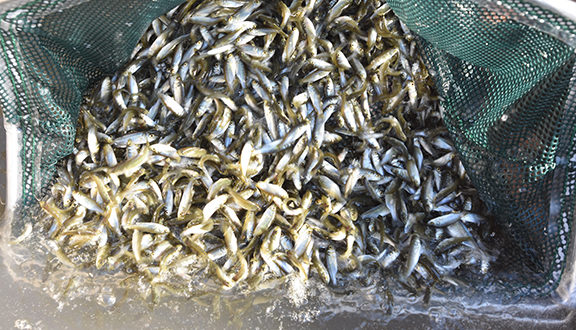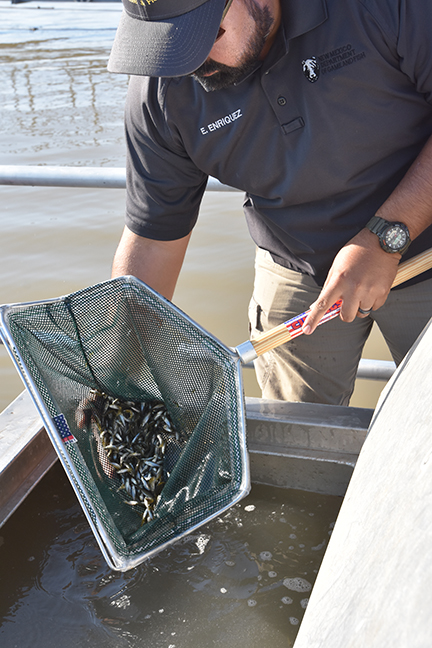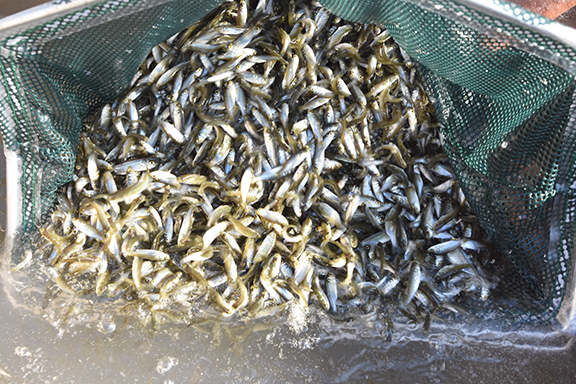After years of planning, the New Mexico Department of Game and Fish has successfully released over 43,000 striped bass hybrids, also known as “wipers,” as a pilot project at Caballo Lake in southern New Mexico. The introduction of these special hybrids provides a new sport fishing opportunity for anglers. Wipers are an artificial cross between striped bass and white bass.
Wipers are intermediate in appearance to striped bass and white bass. They are functionally sterile and have never been documented to establish wild, self-sustaining populations. Caballo Lake provides a unique habitat for these hybrids. It is an open water body, meaning it has minimal floor debris. The lake also slow-moving water flow from the river and a quality gizzard shad population to feed on. They will be sharing these waters with other warm-water sportfish such as walleye, largemouth bass, crappie and white bass.
The Department worked alongside New Mexico State Parks and a private fish farm in Arkansas to deliver this new opportunity to New Mexico anglers. Because of the inability to reproduce, future stocking will take place to ensure fishable populations continue to exist.
“Anglers should start seeing these fish in May of 2023 at a size of about 12-14 inches,” said Edward Enriquez, warm water fisheries biologist for the Department. “They grow very fast in their first two years and get to an exceptional size of 28-30 inches in 4-5 years.
“I would like to say thank you to anglers for supporting projects like this and good luck to those who come to Caballo Lake to fish for wipers,” Enriquez added.
If you are anxious to get your tackle box ready for next spring, here is some useful information for targeting this new fish:
- Wipers are most active during low-light periods (dawn and dusk).
- Wipers will move to deep areas near in-flowing water during late winter.
- Their preferred forage is gizzard shad.
- Wipers readily attack fishing lures, and they fight vigorously once hooked. Anglers that already target white bass would not need to alter their fishing techniques to target wipers.
- Hybrid striped bass are also great table fare, providing a mild, flaky white flesh that can be baked, broiled, fried or pan-seared.
- Currently, regulations consider wipers within the daily bag limit of 25 white bass per day.
Projects like this are possible because of licensed New Mexico anglers. Fishing license fees combined with an excise tax on fishing tackle, boats, motors and certain supplies are leveraged with federal grant funding from the U.S. Fish and Wildlife Service’s Sport Fish Restoration program through the Dingell-Johnson Act. This generates millions of dollars for fisheries research, habitat restoration, boating access, fishing hatcheries and aquatic education in the state of New Mexico. This is a great example of how you, the angler, support conservation efforts!
For more information on Caballo Lake and other warm-water species, visit the NMDGF website.
 New Mexico Wildlife magazine Conserving New Mexico's Wildlife for Future Generations
New Mexico Wildlife magazine Conserving New Mexico's Wildlife for Future Generations


